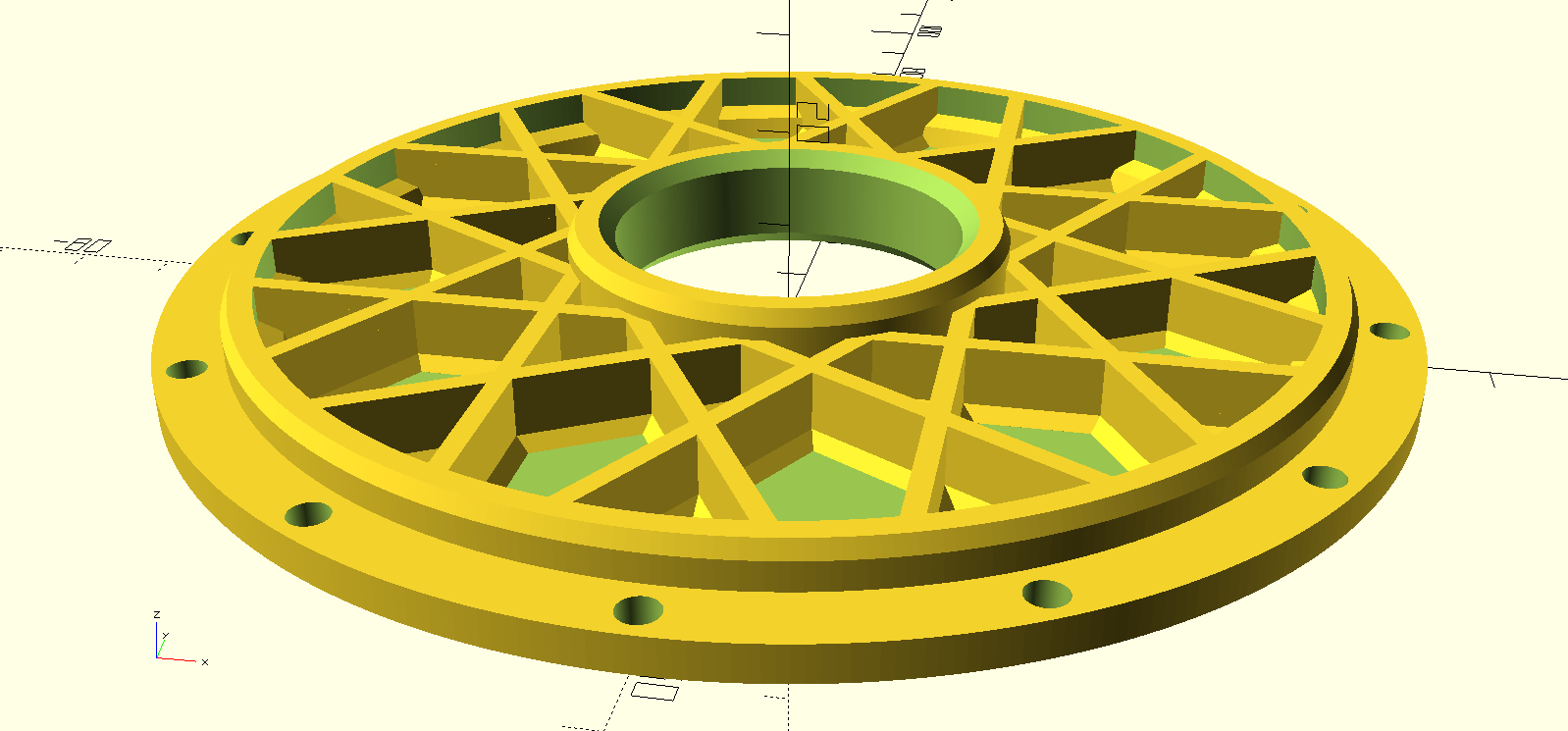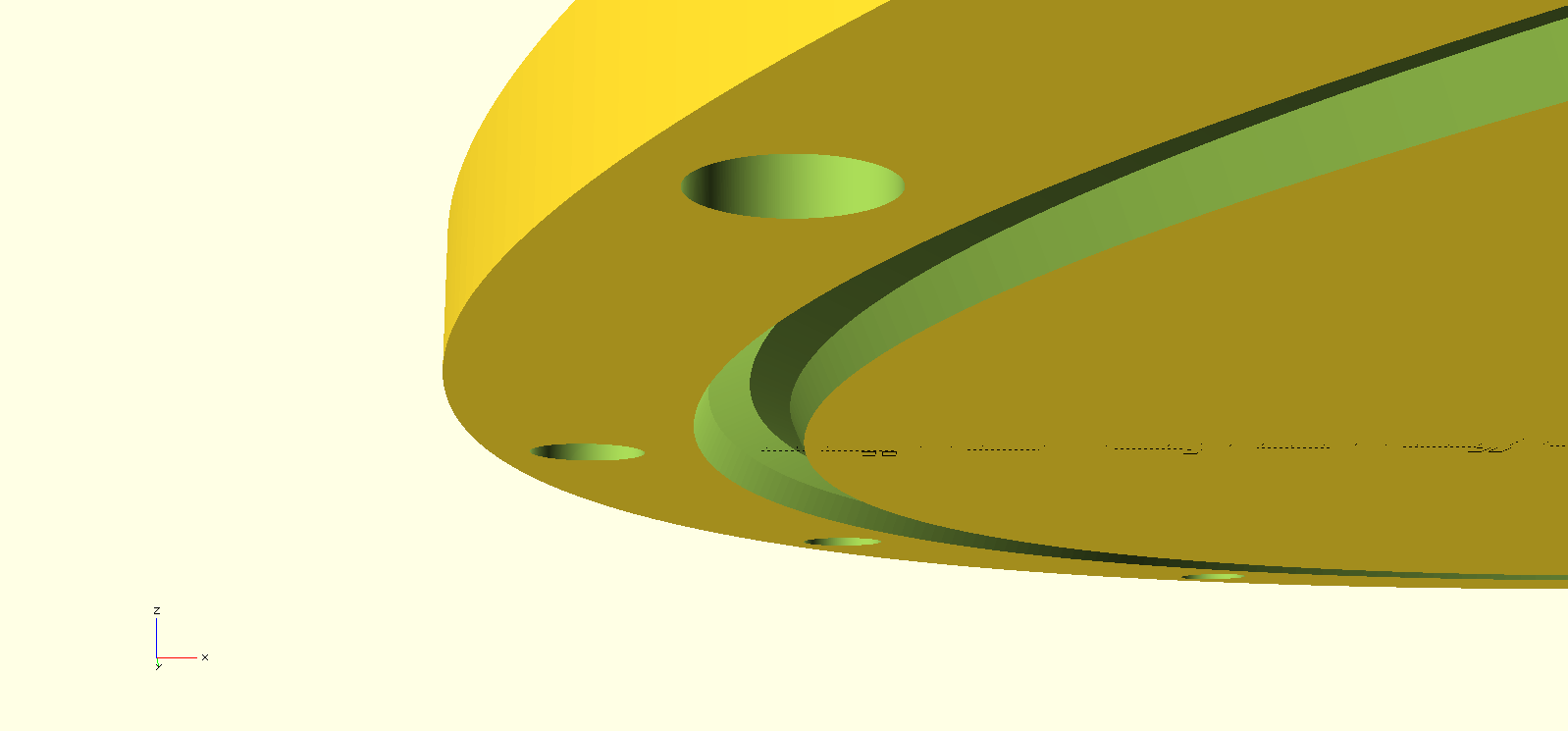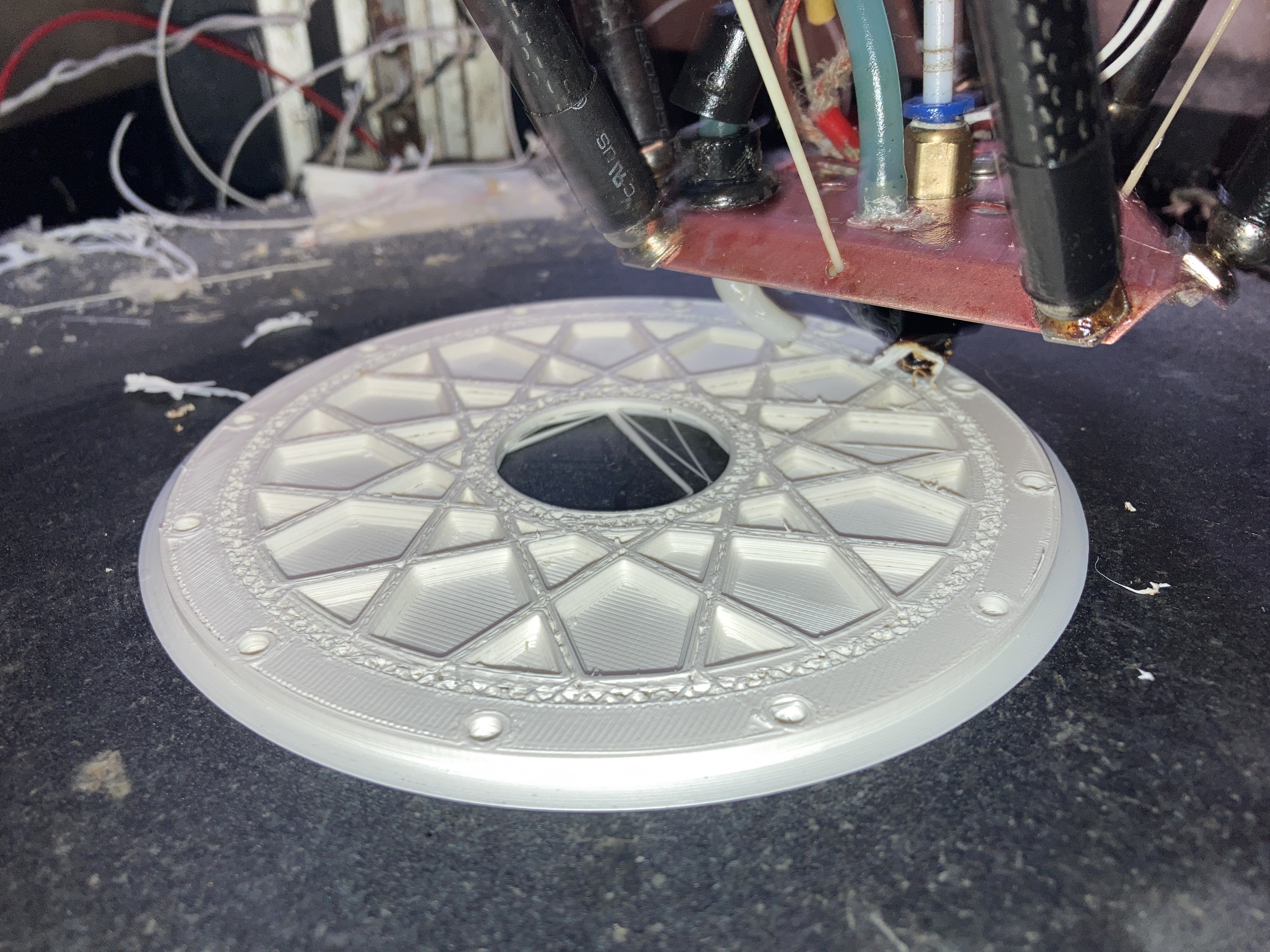Having a real problem with bed adhesion with the nylon. I’m out of Aqua-net and almost out of L’Oreal lock it. Acquanette works better for nylon.
Going to give the ABS one more shot, hopefully splitting the difference between layer separation and warping if I can remember what setting caused each. :)
Printing this now:

It has ribs built by extending the bearing tangent to the edge with an offset that resulted in an even spacing of ribs along the edge. The offset was 0.
The ribs and rim are multiples and result in pretty paths. It has a more convex overall shape to lessen the tension buildup along the edge as those new upper layers contract and pull on the edges, and a thin layer at the bottom to keep junk out of the motors until assembly (again).
Here is the problem.

The groove for the o-ring is against the bed and splits the main body from the rim.
I can move it in further, but right there it is basically right under the lip. Nice straight transfer of clamping force through the part. I wanna keep that. Moving it in puts more stress on my print.
One more time..
Latest files are up, in the files section like this one:
https://cdn.hackaday.io/files/1869067996586304/a-wheel.scad
<edit>
Slicer defaulted to 2 walls and I didn't catch it.
We'll see how that turns out I guess.
Probably more dimension ally stable as the excessive infill will allow them to flex more. Just hope it holds together.
And then I accidentally printed it at 120 mm a second until now as I was using the brim thickness to level the bed. I noticed because it turned into this little chittering beast as it was doing triangle infill.

Not bad… I usually design and print structural parts and so solid ribs are a thing with me but this is actually working kind of well. There’s an overhang right at the start of the bearing area that didn’t fare well but everything else looks great.
White ABS, printing at 260C hotend, 70C bed, enclosed (well I'm missing the front edge of my printer, so mostly enclosed), with no print cooling. Looking good.
</edit>
 MasterOfNull
MasterOfNull
Discussions
Become a Hackaday.io Member
Create an account to leave a comment. Already have an account? Log In.